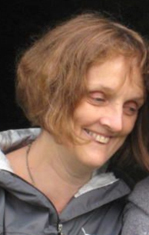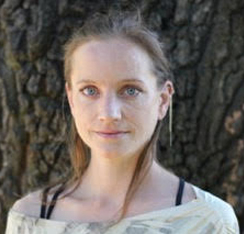Date/Time
Date(s) - Sat, 24th Mar 2018
11:00 AM till 4:00 PM
Location
Alexander Technique Centre
 or iCal or RSS
or iCal or RSS Programme:
11.00 am – 12.30 pm: What causes Hypermobility and what is Hypermobility Spectrum Disorder? (Julie Barber)
For those new to hypermobility or wanting to refresh their understanding of it. What causes hypermobility, how to recognise it, understanding how it affects much more than joints, and (briefly) the terminology given to conditions within the Hypermobility Spectrum such as HSD (Hypermobility Spectrum Disorder), hEDS (hypermobile Ehlers-Danlos Syndrome) and PoTS (Postural Orthostatic Tachycardia Syndrome).
Being aware that a pupil is HM gives insight to teachers as to why some problems pop up such as underdeveloped proprioception, a pupil being simultaneously both ‘too loose’ and yet ‘too tight’, or frequent soft tissue injuries such as sprains, strains and tendonitis. HSD, hEDS and PoTS affect the whole body including the nervous, respiratory and digestive systems.
12.30 – 1.30: Lunch
1.30 pm – 4.00 pm: ‘First, do no harm’; how best to teach a very hypermobile pupil (Julie Barber with Roxani-Eleni Garefalaki and Maddy Paxman)
A forum for discussing and sharing experiences; Julie will report back from the recent HMSA/EDS-UK residential weekend, Roxani will share her experiences of living, training and teaching with hEDS, Maddy will talk about being an ‘undiagnosed HSD’ teacher, and we hope to hear from other HM teachers too. In some cases, hypermobile people have inherited more elastic – and potentially more fragile – connective tissues than are found in the non-HM population. We’ll discuss and share ways of working to enhance the benefits of AT and to reduce the possibility of unintentionally over-releasing and ‘disconnecting’. There will be time for hands-on work in pairs.
If I have one thing to say about hypermobility this would be it: while normal people can be compared to strong bridges, hypermobile people are like bridges made of separate pieces of wood connected with rope. Thus everything that happens on this bridge will cause much more nervous stimulation, sensory information and movement. Feeling one integrated whole person can be tough when feeling so many details.
Roxani-Eleni Garefalaki
Open to: All teachers and 3rd year trainees.
Price: £50.00. (3rd year trainees: £40). To book please email us.
Presented by Julie Barber, Roxani-Eleni Garefalaki, and Maddy Paxman.
Biographies:
Julie Barber (MSTAT) qualified with Walter and Dilys Carrington in 1993 and now teaches in North London. Since 2011 (when her daughter was diagnosed with Hypermobility Syndrome) she has been researching, attending and giving workshops on Hypermobility and Hypermobility Spectrum Disorders. She published ‘Hypermobility Syndrome’ in STATNews January 2012 and ‘Too Loose yet Too Tight, working with Hypermobility’ in The Congress Papers 2015. She is a professional member of the Hypermobility Syndromes Association (HMSA) and the South East Hypermobility Group at University College London.
Roxani-Eleni Garefalaki trained at the Alexander Technique Studio in London, where she runs her practice. She is a Tai Chi and QiGong instructor, director and performance artist from Athens, Greece. She has been diagnosed with EDS-hypermobility type and in 2005 was diagnosed with lupus. Using her flexibility as an asset, she’s worked professionally in the performing arts since 2001 as an acrobat, singer and actress. However her career has always been disrupted by injuries, dislocations and high stress levels. Her desire to heal herself and understand the cause of her ailments brought her to the Alexander Technique. During her teacher training, she managed to heal from lupus (without any medication) and learn how to avoid triggering symptoms due to her hEDS. Having a deep understanding of what being hypermobile means, she is using the Alexander Technique to help people become mindful through Movement and improve their quality of life. https://www.mindfulness-inmoti
Maddy Paxman studied at the Constructive Teaching Centre with Walter Carrington, and has been teaching the AT for thirteen years. Prior to that she taught singing and piano privately, in schools and to classes of adults at the City Lit institute.She has never formally been diagnosed as having HSD, but has many of the symptoms, including five years of Chronic Fatigue following a traumatic bereavement. She has idiopathic scoliosis, weak/painful joints and was always a ‘bendy’ child (and a clumsy one. She says that ‘despite my proprioception improving with the AT, I am still capable of slamming a door in my own face!’). The Alexander Technique has been extremely helpful to her but the training was a challenge, and she’s become more aware of its limitations and potential problems over time.
 |
 |
 |